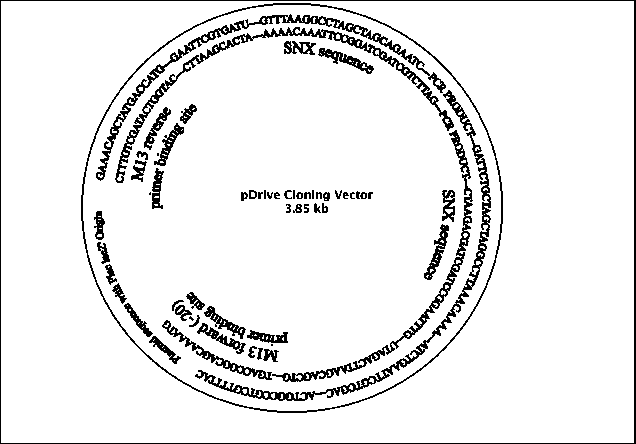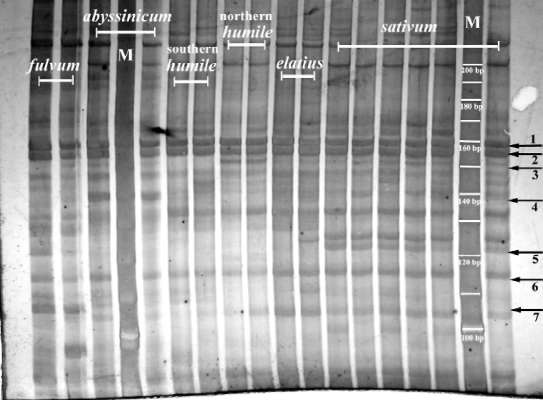Pisum Genetics
2006—Volume 38
Research Papers

Fig. 1 Graphical representation of the pDrive Cloning Vector. Pea DNA was amplified using the SNX sequence in a PCR reaction. The Taq polymerase leaves a deoxyadenosine base to which the uracil overhang at the vector insertion sites attaches. Pea DNA is nested between SNX primer sites which are nested in turn between M13 universal primer binding sites. SNX primers were used to verify pea DNA insertion, while M13 primers were used to check insert size and in subsequent DNA sequencing reactions. Sequence shown between the M13 and SNX primer binding sites is a portion of the plasmid vector sequence at the site of PCR product insertion (8).
incubator shaker at 200 rpm overnight. Plasmid DNA was recovered from the bacteria using a QIAprep® spin miniprep kit and eluted in ddH2O.
Sequencing reactions were conducted in the Core DNA Facility at Northern Illinois University using M13 forward (-20) and M13 reverse primers. SNX and microsatellite DNA sequences were detected as text-format sequencing data using a word processing program and the “Find” command. Text-format sequence data that contained microsatellite DNA sequences were imported into the Primer3 program (9) used to design microsatellite-specific primers. Optimal primer length was set at 20 bp, optimal Tm was set at 60oC and primer GC content was adjusted to a minimum of 20% and maximum of 80%. Resulting primer sets were ordered from either MWG Biotech (High Point, NC) or Sigma Genosys (The Woodlands, TX).
Pea DNA accessions representing the range of the genus Pisum were amplified with each primer set to evaluate detectable differences using the RAMS method [PCR: 15.65 mkl ddH2O, 2.5 mkl 10x PCR buffer, 2.5 mkl MgCl2 (25mM), 1.25 mkl dNTPs (2.5 mM), 1 mkl each forward and reverse primer (100 pmol/pl) and 1 U Taq polymerase; cycle conditions: 95oC for 5 min, then 45 cycles of 95oC for 30 sec, 35oC for 30 sec and 72oC for 2 min)]. PCR products (5-6 pl) from all primer sets and a single-stranded 10 bp molecular marker were separated on 20 cm x 0.75 mm 6% polyacrylamide denaturing gels run under constant voltage (800 V) for
11
